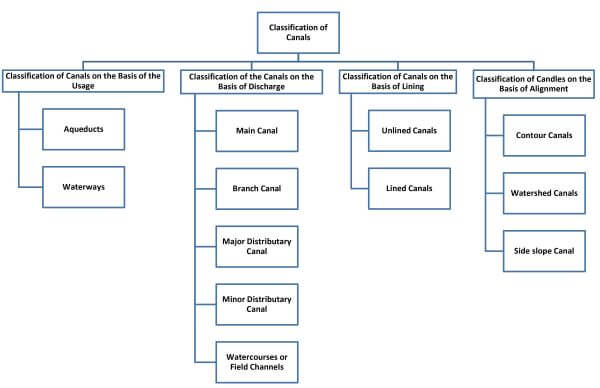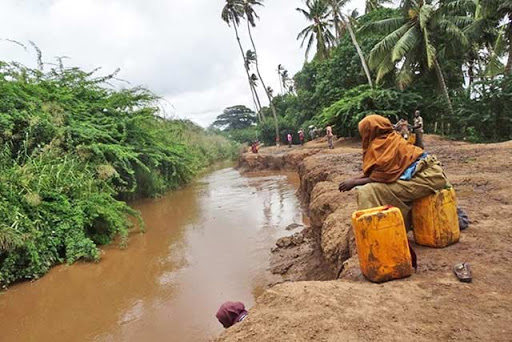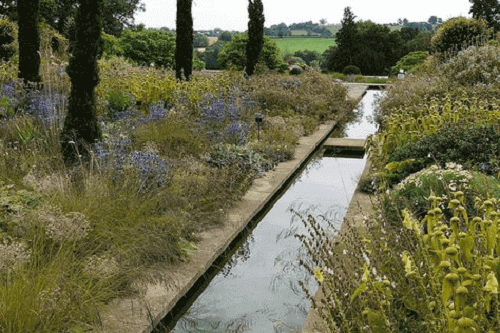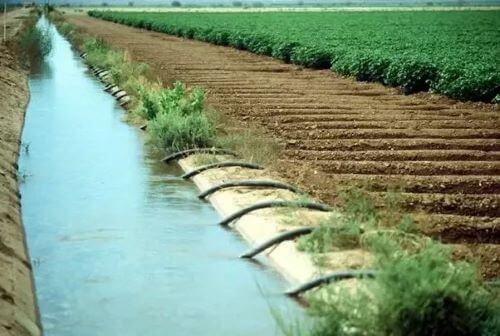
Introduction of Canal
Canal plays one of the most important roles in transportation and global commerce. The canal is widely used for the irrigation and drainage urban Water Supply, hydroelectric power generation, transportation of cargo and power generation purposes.
In this article, you will get to know what is a Canal Irrigation and the classification of canals.
What Is Canal?

The irrigation water is conveyed from the reservoir to flow through an open channel of a trapezoidal shape which is known as a canal. The canal is a man-made waterway which allows ships and ships and boats to pass from one place to another place.
Canals are widely used for the transportation of water for irrigation purpose and different human uses. In the olden days, the canal is used to connect the waterfalls.
Classification of Canals

The canals are classified in the different types on the basis of the factor which given are as follows
1. Classification of Canals on the Basis of the Usage
- Aqueducts
- Waterways
2. Classification of the Canals on the Basis of Discharge
- Main Canal
- Branch Canal
- Major Distributary Canal
- Minor Distributary Canal
- Watercourses or Field Channels
3. Classification of Canals on the Basis of Lining
- Unlined Canals
- Lined Canals
4. Classification of Candles on the Basis of Alignment
- Contour Canals
- Watershed Canals
- Side slope Canal
The detailed description of the Classification of canals are given as follows
#1. Classification of Canals on the Basis of the Usage
#a. Aqueducts
- Aqueducts is a significant watercourse which carries water from a source to the distribution point. There are various types of Aqueducts.
- There are various types of aqueducts and the simplest types are mostly small ditches which cut into the earth. They run through the underground tunnels.
- The Modern types of aqueducts use the pipeline as their path. This types of canals are used for the conveyance and delivery of water for consumption and other agricultural as well as irrigation purposes.
#b. Waterways
- Waterways are the type of canals which are used for carrying ships, boats and people from one place to another.
- The path of waterways is known as the secondary by-product of our countries extensive historical watermark network. It plays a vital role in Transportation.
- This includes the different features like river, streams, canals, lakes, reservoirs and docks.
- Waterways help to provide a safe operating environment by reflecting on the local environment. Waterways also help to decrease the carbon footprints and reduce Road congestion and improve the health of the local community.
#2. Classification of the Canals on the Basis of Discharge
#a. Main Canal
- The Canals which has discharged more than ten cumecs is known as the Main Canals. The Main Canal is also known as the Arterial canal.
- The Main Canal is the superior canal of the drainage system which helps to collect the water from the drainage canals and conducts it to the water intake.
- The Main Canal carries discharge directly from the river. It takes off directly from the upstream side of the weir head works.
- The main Canal supplies the water to the branch canal. The Main canal cannot be used for direct Irrigation.
- The Main canal helps to supply the water from a river, reservoir or canal to the irrigated land by the flow of gravity.
#b. Branch Canal
- When the main Canal reaches the area where the irrigation is to be done it divides out in two branches which joins to the different parts of the area.
- The Branch canal ends into a Distributary. The branch canals have a discharge which ranges from 5 to 10 cumecs.
- Branch Canal also plays the role of the feeder channel for the major and minor distributaries. Branch channels do not carry direct irrigation but provide direct outlets.
#c. Major Distributary
- The canals whose offtake from the Main Canal or the branch canal with the head discharge from 028 to 15 cumecs are known as significant distributaries. The Major distributaries take off water from the branch canals.
- The discharge of the major distributary is less than the Branch canal. Major distributary is also known as irrigation channels because of their supply of water to the field directed through outlets.
#d. Minor Distributary
- The canals whose discharge range from 25 to 3 cumecs are known as Minor Distributors. It offtakes from a major distributary.
- Sometimes Minor Distributary also gets the supply from the Branch Canals. The discharge in the minor Distributary is less than the major distributary.
- They also help to provide the courses through the outlets provided along with them.
#e. Watercourse or Field Channel
- The Discharge in the watercourses is less than 25 cumecs. A filed channel takes off from a significant distributary or minor and it depends upon the on which extent the irrigation will happen.
- From the channels, water enters into the field of cultivators. Water courses field channels may be constructed by the government on behalf of the cultivators only.
- These are small channels which are known as Field channels generally has a capacity of less than 05 cumecs.
- The death of the water course or field channels is usually less than 1 km having a command of 10 to 15 hectares.
#3. Classification of Canals on the Basis of Lining
#a. Unlined Canals
- Unlined Canal consists of beds and banks which is made up of the natural soil. The underlined canals are not provided with the lining of impervious material.
- It reduces the growth of Aquatic weeds which retards the flow and leads to an increase in the maintenance cost.
- Unlined canals can tolerate velocity not more than 0.7 m/s because of the erosion.
- In case of the unlined canals, there may be a danger of the breakage of the bank of the canal which is caused by the overtopping erosion and animal burrowing.
#b. Lined Canal
- Lining canals are provided with the lining of the impervious materials on its beds and the banks to prevent the seepage of water.
- The lining of the canals will help in the water conservation, prevent seepage of water and Helps to reduce the maintenance of the canals.
#4. Classification of Candles on the Basis of Alignment
#a. Contour Canal
- The control Canal is an artificial canal which is known for being dug Navigable by following the control line of the land.
- In this alignment, the canal generally follows a country except for necessary longitudinal slope. Main Canal is run as control Canal in the header reach. It can irrigate on one side only which is the lower side.
- In the control Canal, one of its sides is high so that bank is required only on the other side. There may be a risk of breaching or silting.
- The control canal need not follow the same contour. To enable the water to flow by the gravity some surface slope should be given.
- The drawback of the contour alignment is that it irrigates on one side only. Control panels are most suitable in the hilly areas.
#b. Watershed Canal
- The watershed canal aligns with any type of natural water shade or ridgeline. It is also known as ridge canal.
- This type of canals usually takes off from the contour canal. It irrigates on both sides. The rich channel is more economical.
#c. Side Slope Canal
- In this alignment, the canal is aligned across the contours. There are not any type of cross drainage works are required.
- These candles have steep bed slope and hence linings are necessary to prevent erosion.
What Is Inundation Canal?

- Inundation canals are those which are linked to the large rivers. This type of canal system is constructed along the side of the perennial river.
- This canals directly are taken out from the rivers without constructing any barrages or Dam. This type of canals receives water when the river is high enough and especially in flood.
What Is Perennial Canal?

This canal flow throughout the year that’s why it is known as perennial canals. Perennial canal is linked to the dams and to provide water for the irrigation of larger area of land.
What Is Canal Irrigation?

An irrigation canal or lateral is constructed to convey water from the source of supply to one or more farms. The purpose of this practice is to deliver water to the farm irrigation system (s).
Advantages of Canal Irrigation
There are many advantages of Canal irrigation which are given below
- Canal irrigation helps in the development of an irrigated area of waste land.
- Canals can be also used for the purpose of drinking water supply, fishery development and hydroelectricity.
- The droughts can be avoided with the help of construction of the canals.
- Canals help to increase the water level.
- Canals provide higher productivity per hectare land as compared to the conventional method of watering.
- The water requirement of the crop can be fulfilled by the canal with the help of a proper irrigation system.
- Canals are fed by the rainwater from the rivers.
Disadvantages of Canal Irrigation
The disadvantages of Canal irrigation are as follows
- Canal construction required investment and time that’s why it cannot be used for all irrigation.
- Canals required regular maintenance.
- If the water present in the canal in the stationary state then there may be chances of growth of worms and mosquitoes.
- Due to the shortage of water in the inundation canals the crops kit destroyed due to want of water.
Frequently Asked Questions (FAQ) About Canals
What Is a Canal?
A canal is a man-made waterway designed to transport water, ships, or boats from one location to another. It can serve various purposes including irrigation, drainage, and hydroelectric power generation.
What Are the Main Types of Canals Based on Usage?
- Aqueducts: These are channels that carry water from a source to a distribution point, often through pipelines or tunnels.
- Waterways: These canals facilitate the transportation of ships, boats, and people and include features such as rivers, streams, and lakes.
How Are Canals Classified Based on Discharge?
- Main Canal: Handles large volumes of water, typically over 10 cumecs, and supplies water to branch canals.
- Branch Canal: Distributes water from the main canal to various parts of the area, with discharge ranging from 5 to 10 cumecs.
- Major Distributary: Takes water from branch canals with a discharge ranging from 0.28 to 15 cumecs.
- Minor Distributary: Receives water from major distributaries or branch canals, with discharge from 0.25 to 3 cumecs.
- Watercourse or Field Channel: Smaller channels with less than 0.25 cumecs discharge, directing water to fields.
What Is the Difference Between Lined and Unlined Canals?
- Unlined Canals: Feature natural soil beds and banks, prone to erosion and require higher maintenance.
- Lined Canals: Have impervious materials lining their beds and banks to prevent water seepage and reduce maintenance needs.
What Are the Types of Canals Based on Alignment?
- Contour Canal: Follows the contour of the land, typically irrigating only one side.
- Watershed Canal: Aligns with natural water ridgelines, irrigating both sides.
- Side Slope Canal: Crosses contours with steep slopes, requiring linings to prevent erosion.
What Is an Inundation Canal?
An inundation canal is linked to large rivers and is designed to receive water during high river levels or floods, typically without the need for barrages or dams.
What Defines a Perennial Canal?
A perennial canal flows throughout the year and is usually connected to dams, providing continuous irrigation to larger areas of land.
What Are the Advantages of Canal Irrigation?
- Develops irrigated areas from wasteland.
- Can be used for drinking water supply, fishery, and hydroelectric power.
- Helps prevent drought and increases water levels.
- Provides higher productivity per hectare compared to traditional methods.
What Are the Disadvantages of Canal Irrigation?
- Requires significant investment and time for construction.
- Demands regular maintenance.
- Standing water in canals can lead to mosquito and worm growth.
- Inundation canals may suffer from water shortages, affecting crop yields.

